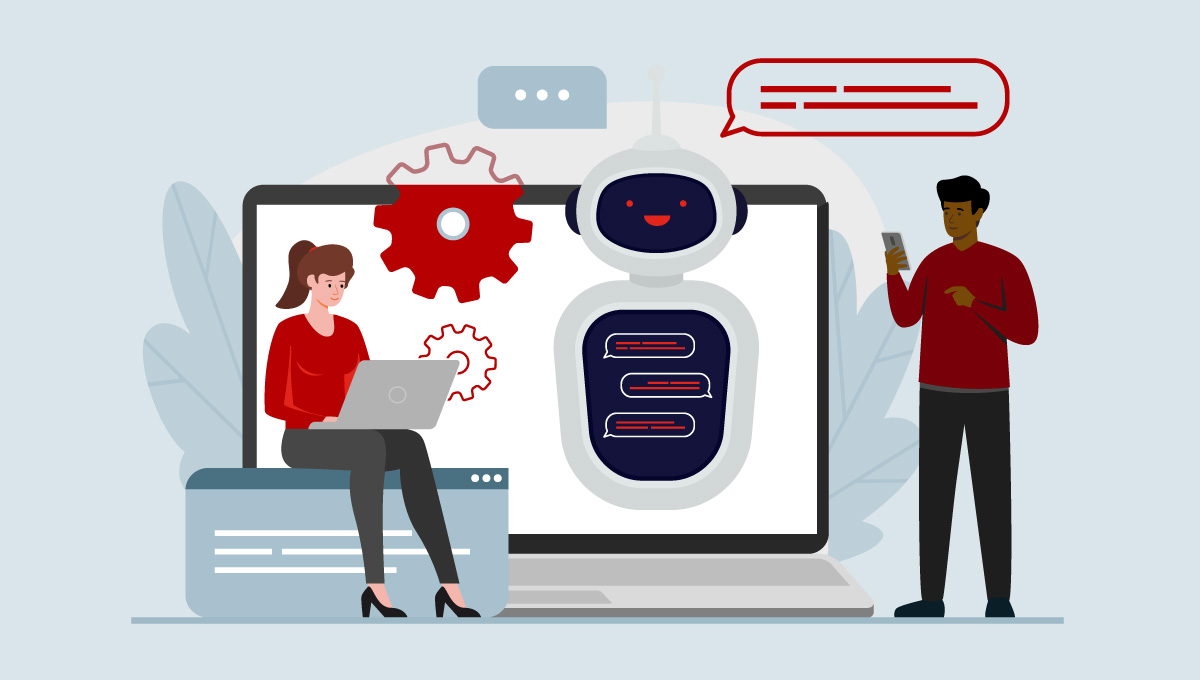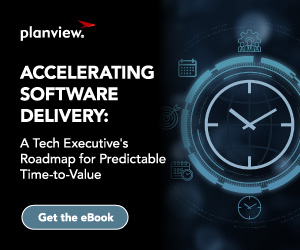
AI has transformed the landscape of software and revolutionized how organizations deliver software, drive business transformation, and stay ahead of competitors. By adopting these cutting-edge technologies, organizations can not only improve productivity and decision-making but also foster a culture of innovation and efficiency.
Phil Clark, Vice President at Parchment, has been instrumental in overseeing the company’s AI strategy and implementation. As part of his role, he participated in the Early Adopter Program for Planview Copilot, gaining valuable insights and experiences. In this blog, we’ll walk you through his AI journey, sharing his thoughts, learnings, and the impact of AI on his organization.
Check out the case study to learn more about how Parchment is utilizing AI and Value Stream Management and gain practical insights for your own AI-powered software delivery journey.
Embracing AI: The Key to Unlocking Business Growth and Competitive Edge
AI plays a pivotal role in business transformation, significantly impacting productivity and decision-making. It can automate repetitive and mundane tasks, allowing employees to focus on strategic and creative activities. This leads to enhanced productivity as workers can achieve more in less time with higher accuracy.
Additionally, AI-driven analytics provide insights that enhance decision-making processes, allowing businesses to make quicker and more informed choices. These capabilities collectively drive business growth, operational efficiency, and competitive advantage in a rapidly evolving market. Clark emphasizes that adopting AI is not merely an option but a necessity for maintaining a competitive edge.
“Adopting AI is not even a choice for us here. We just need to be strategic and learn how to use it.” Phil Clark, Vice President at Parchment
Common Concerns and Challenges with AI Adoption
Adopting AI brings substantial benefits to organizations but also introduces several critical concerns and challenges that must be addressed to ensure successful implementation. These include managing security and privacy risks, mitigating AI biases and errors, and establishing robust governance and policy frameworks.
Security and Privacy Risks
One of the primary concerns with AI adoption is the risk of leaking sensitive information. Clark highlights a notable incident involving Samsung, where the company had unwittingly leaked confidential source code into the public domain whilst using ChatGPT to help them with tasks. This incident underscores the critical importance of protecting sensitive information when using AI tools.
Safeguarding Personally Identifiable Information (PII) is equally crucial, with Clark emphasizing the need for governance and policies around AI use, and employee education around the risks of exposure of PII and other sensitive data. These measures provide a framework for responsible AI adoption, ensuring alignment with organizational values and legal requirements.
Additionally, the challenge of shallow AI adoption, where tools are used outside organizational control, poses significant risks. Clark notes that when companies do not provide adequate tools, employees might resort to free or affordable options available to consumers, leading to inconsistencies and security vulnerabilities. To mitigate these risks, organizations must establish and communicate clear policies and provide sanctioned AI tools. This approach helps maintain control and consistency while leveraging the benefits of AI responsibly.
AI Bias and Errors
AI systems, while powerful, can exhibit biases in pattern recognition, leading to erroneous and potentially harmful outcomes. Clark points out the inherent risk, explaining, “It’s a pattern matcher and it’s going to come up with incorrect data and whatever biases are in there.” AI models learn from historical data, which can contain biases reflecting societal prejudices and inequalities. If these biases are not managed, AI systems can perpetuate and even exacerbate discrimination and errors in decision-making processes.
To combat these issues, strategies for bias detection and mitigation are essential. Regular audits and updates of AI models ensure they remain fair and accurate, with human oversight playing a critical role. Clark advocates for a “human in the loop” approach, where knowledgeable humans validate and correct AI-generated insights. Additionally, understanding the sources of bias, such as training data, algorithms, and deployment scenarios, is crucial. Organizations must train their teams to recognize and manage these biases responsibly, thereby harnessing AI’s power while minimizing associated risks.
Building a Strategic AI Implementation Framework
Implementing AI strategically requires a comprehensive framework that ensures readiness, sets clear goals, and continuously optimizes for impact. Leveraging tools like Planview Viz, including the embedded generative AI insights from Planview Copilot can significantly enhance software delivery by simplifying data analysis and providing strategic insights and recommendations. Below are five steps to consider when adopting AI in the software delivery process.
1. Readiness Assessment
Assessing team readiness for AI adoption is a crucial first step for technology leaders. To effectively evaluate this, leaders should:
- Conduct a skills inventory to identify existing capabilities and gaps in AI knowledge.
- Gauge the team’s comfort level and familiarity with AI tools through surveys or interviews.
- Assess the organization’s existing technological infrastructure to determine if it supports AI integration.
- Review current workflows and identify areas that could benefit from AI enhancements.
2. Goal Setting and Impact Identification
Establishing clear goals and desired outcomes is fundamental in guiding the AI implementation process. Leaders should:
- Define specific, measurable objectives for AI projects, such as improving operational efficiency or enhancing customer experience.
- Involve key stakeholders in setting these goals to ensure alignment with broader organizational strategies.
- Identify high-impact opportunities for AI deployment by analyzing areas where AI can significantly improve processes or solve critical problems.
- Prioritize projects that offer the highest potential return on investment and align with strategic business goals.
3. Pilot Projects and Scaling
Starting with focused pilot projects allows organizations to test AI solutions in a controlled environment before wider implementation. Leaders should:
- Select a small, manageable project with clear parameters and objectives for the pilot phase.
- Monitor and document the outcomes and lessons learned from the pilot to inform future projects.
- Use feedback from the pilot to make necessary adjustments and improvements.
- Gradually scale the implementation, expanding AI use to other areas based on proven success and established best practices.
4. Leveraging Planview Copilot
Planview Copilot can be a valuable tool in the AI implementation process. It supports teams by:
- Enhancing productivity through data crunching and providing actionable insights.
- Assisting in agile and lean practices, helping teams focus on strategic tasks rather than mundane ones.
- Offering continuous learning and support, acting as an AI assistant to improve decision-making and workflow efficiency.
5. Measuring and Optimizing Impact
Measuring the impact of AI implementation is essential to ensure continuous improvement. Leaders should:
- Establish baseline measurements before starting AI projects to compare against future performance.
- Use key metrics to assess progress, such as time saved, error reduction, and productivity gains.
- Implement a continuous improvement process, regularly reviewing and refining AI strategies based on data and feedback.
- Encourage a culture of experimentation and learning, where teams are motivated to optimize AI use and explore new opportunities for improvement.
Transform Your Software Delivery with Planview Copilot and AI
Embracing AI is no longer optional but a strategic necessity for tech leaders aiming to accelerate software delivery and secure a competitive edge. Organizations can unlock substantial benefits by adopting a structured approach to AI implementation—assessing readiness, setting clear goals, starting with pilot projects, and continuously measuring impact. Tools like Planview Copilot play a pivotal role in this journey, offering enhanced productivity, strategic insights, and agile support to drive business transformation.
Ready to see how Planview Copilot can revolutionize your software delivery process? Watch this product demo to see how this powerful tool can help your organization harness the full potential of AI.




